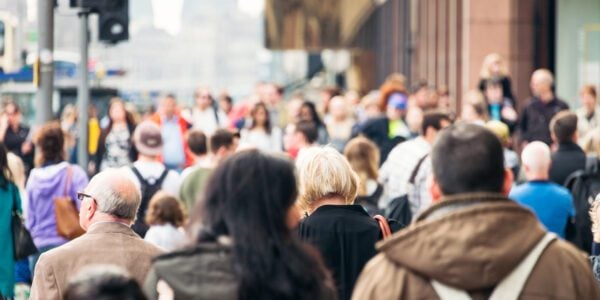Residents are twice as likely to volunteer helping others and had seen an improvement in relationships with family and neighbours during the COVID-19 pandemic if their local authority had received government funding for social cohesion projects or identified it as priority.
The research, funded by the Nuffield Foundation, compared the views and experiences of people living in six English local authority areas which had invested and prioritised social cohesion programmes prior to COVID-19 with those of people living elsewhere in Britain.
Striking differences included:
- People in social cohesion investment areas were twice as likely to be involved in social activism during the COVID-19 pandemic than those elsewhere in Britain.
- In areas investing in cohesion, one in four people (24%) had volunteered in the past month compared to just eight per cent elsewhere.
- People living in investment areas reported their relationships with family and neighbours had improved during COVID-19 while those elsewhere rated these relationships as staying the same or declining.
- People in cohesion investment areas were more likely to say they were optimistic about the future than those living elsewhere (54% versus 48%).
- Positive attitudes towards people from immigrant backgrounds were also more common among those in cohesion investment areas compared to elsewhere.
In total almost 3,000 people were surveyed, assessing the experiences of those in five local authority areas – Bradford, Blackburn with Darwen, Walsall, Waltham Forest and Peterborough which received Ministry of Housing, Communities and Local Government Integration Area funding, plus Calderdale which identified cohesion as a strategic priority. These were then compared with the experiences of people living in Scotland, Wales and Kent (the ‘control’ group).
Overall the research paints a picture of local authorities who have invested in cohesion now reaping the benefits of being more socially cohesive and more resilient during the pandemic. It also identifies factors influencing social cohesion during a time of crisis – and can be used to help other areas rebuild and recover from the impact of COVID-19.
The study was carried out by the University of Kent’s school of psychology and Belong – the Cohesion and Integration Network as part of Beyond Us and Them, a wider longitudinal study to track social cohesion during the pandemic.
Professor Dominic Abrams, director of the Centre for the Study of Group Processes at the University of Kent said: “Following the government’s investment in social cohesion in particular local authorities we now observe that their residents are more likely to volunteer, feel more optimistic and report better relationships with family and neighbours. These communities appear better set up to weather the storm of COVID-19. Our research is continuing, and so far supports a strong case for continuing to invest in social cohesion programmes at local levels.”
Councillor Abdul Jabar, Bradford Council’s executive member for Neighbourhoods and Community Safety, said: “The results of this research are really positive, but to us not altogether surprising – we currently have 40 different community cohesion projects running to promote employability, social mixing and build trust between communities. During the COVID-19 pandemic we’ve seen residents shop for each other, check on elderly neighbours and support one another in lots of different ways – there have been many hidden heroes during this crisis.
“We know that the residents of our district are kind and supportive and will do all they can to help friends, family and neighbours. This work will continue and will hopefully make the uncertain weeks and months ahead a little easier and show the great work that goes on in our district and the community spirit that exists here. Given that this funding is time-limited, we need certainty that it will continue – so we have made representations to government calling for it to be sustained.”
Jo Broadwood, CEO of Belong – The Cohesion and Integration Network said: “These findings show investing in social integration and leadership at a local level can support communities to strengthen social connections and trust between groups, in order to resist divisive narratives and encouraging people to come together at a time of crisis.”
We are pleased to be supporting this important research which is collecting rich data from across Britain on how social cohesion is being affected by the COVID-19 crisis. We welcome the better understanding this project will bring of the factors that might bring people and their communities together to become more resilient.“Alex Beer, Welfare Programme Head at the Nuffield Foundation























































